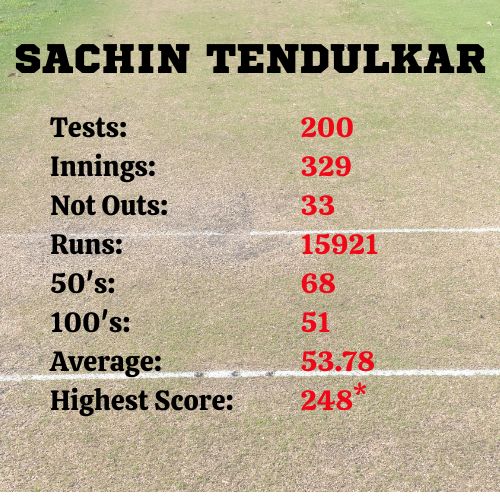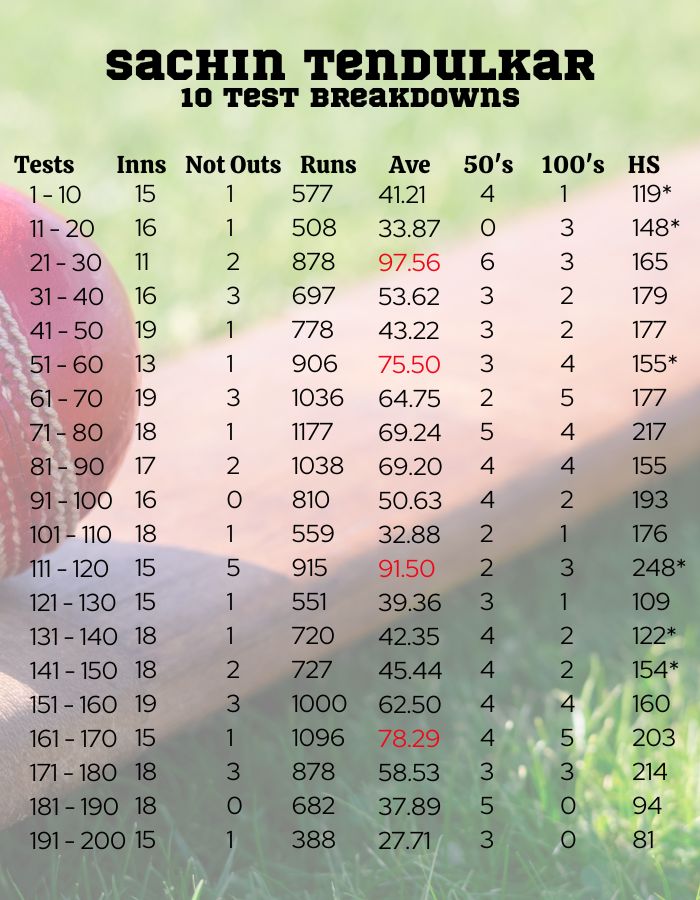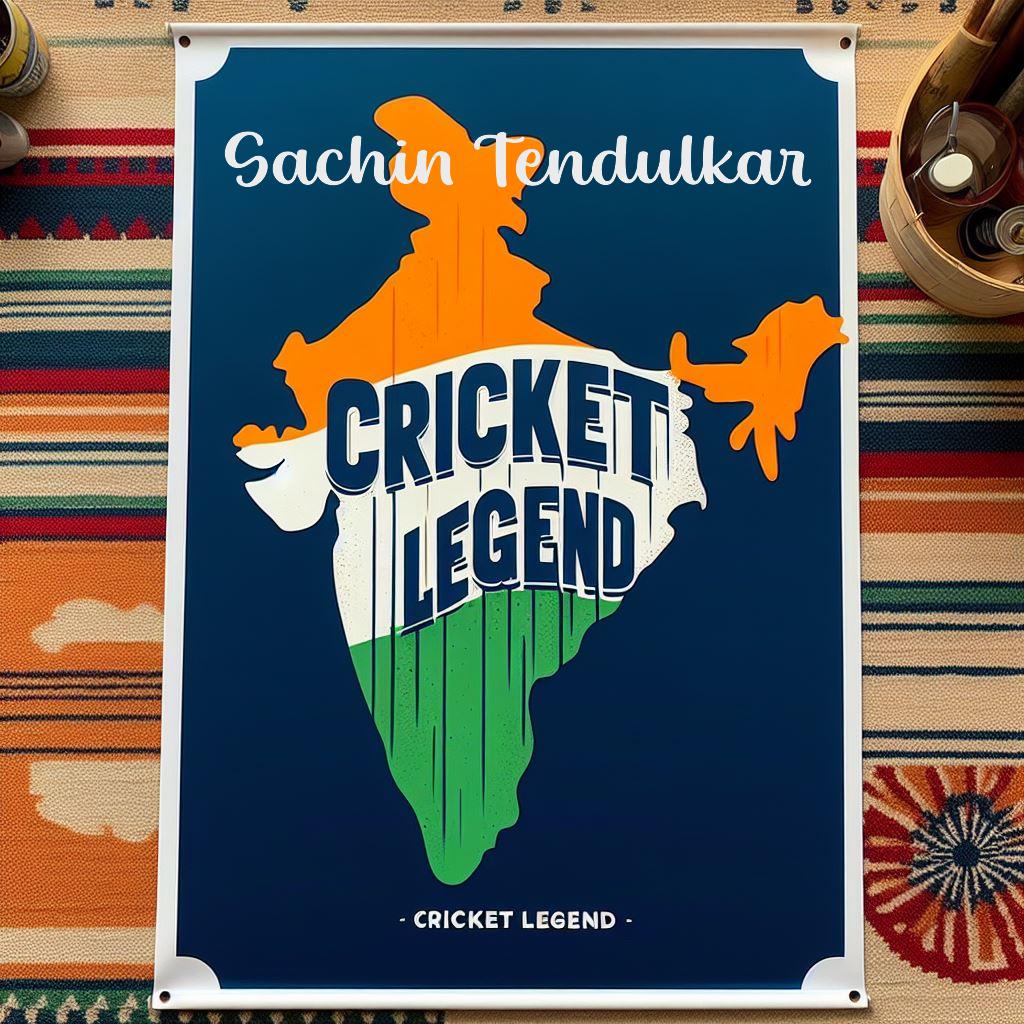Sachin Tendulkar – it is the name that resonates with cricket enthusiasts worldwide. To millions, no, hundreds of millions, maybe a billion or more, he wasn’t just a player, but an icon; a phenomenon that transcended the boundaries of the game.
His journey from a humble beginning to becoming the maestro of cricket is a testament to his unwavering dedication and unparalleled talent.

Bollywood Hungama, CC BY 3.0, via Wikimedia Commons
The story of Sachin Tendulkar began in 1973, born in Mumbai, India. The city of Mumbai, which is often referred to as the heartland of Indian cricket, infused Sachin with the passion and fervour of the sport from a young age. He took up cricket when he was eleven years old, and at 14, he went to the MRF Pace Foundation in Madras, hoping to learn and better his skills in the art of fast bowling.
The trainer, another legend of the game, former fast bowler Dennis Lillee, didn’t think much of Tendulkar’s bowling, and his advice would alter the cricketing world forever – focus on batting instead.
So Tendulkar did.
And he was pretty good at it.
So, good that at the age of 15, he scored 326 not out in an inter-school game (Sharadashram v St. Xavier’s High School), and put on a unbeaten partnership of 664.
By the end of 1989, he had played his first test at just sixteen years of age, against a strong Pakistan bowling lineup featuring some of the best fast bowlers ever in Wasim Akram, Waqar Younis and Imran Khan. The four match test series would end in 4 draws, and Tendulkar’s record was ok, if not spectacular, scoring 215 runs in 6 innings with two 50’s and a highest score of 59.
It might not have been the most spectacular start, but it was the beginning of a test career that would end 23 years and 196 more tests later.

Sachin Tendulkar’s Test Career … for the stats nerds
At the time of this post, Sachin Tendulkar has played the most tests (200), and scored the most runs in test cricket (15,921), as well as the most centuries (51). He has also played the most one day cricket matches (463), scored the most runs (18,426) as well as the second most centuries (49 … piped by Virat Kohli’s 50th). He is the only man to have scored 100 centuries across both tests and one day internationals.
His career actually started fairly sedately. 22 test matches into his career, his average sat at 39.25, which is not bad, but it’s not the stuff of legend. But even so, he had shown glimpses of the future legend he became.
The 1991/92 tour of Australia featured Tendulkar’s 2nd and 3rd centuries, and people who saw the second, an unbeaten 148, still talk about it today. He was the youngest test century maker in Australia, at 18 years and 253 days, and that day marked Sachin’s first duel with a young Shane Warne. In fact, that was Warne’s first test, and his bowling performance of 1/150 shows that Sachin won that day.
Tendulkar would become, also, the second youngest century maker in Australia just 30 days later with another classy 114, in the final test in Perth.
Sachin Tendulkar was here … and he was here to stay.
In his 29th test, Sachin Tendulkar’s average would pass beyond 50, the number that denotes the very good from the greats of batting. And for only a couple of blips back down into the 49’s, the average would stay about 50, and for one solitary innings in his 92nd test it would pip beyond 59, only for three ducks in four innings to bring the average down again.

Tendulkar’s best period of 10 innings, based on average, was 105.14, however, this was inflated with 3 not outs. The most runs he scored in 10 innings was 946, from 6/02/2010 to 9/10/2010. This included 4 centuries (2 of them doubles) and three 50’s.
His worst period of 10 innings, based on average, was just 15, on 26/12/2003. He broke that slump very soon after, scoring 241 not out, 60 not out and 194 not out in successive innings.
The most number of innings he experienced without a 50 was 13, and without a century it was 40, but on the bright side, the most number of innings between any two ducks was 90.
Which is quite remarkable, as Don Bradman only had 82 innings in his entire career, and we know he had a few ducks … one particularly famous one at the end comes to mind.
The most number of consecutive innings above 20 runs was 10, another impressive stat because Bradman’s best was 8 innings in a row scoring 20 or more.
11 separate times in his career did he produce a 10 innings batch during which he averaged more than 75. (NOTE: by separate, we mean that none of the 10 innings could be included in two batches) And 6 separate times did he produce a 10 innings batch during which he averaged less than 20. Interestingly, only the once did he produce a 10 innings batch that average more than 100.
Sachin’s Unforgettable Innings: Epoch-defining Performances
The veneration of Sachin in India goes beyond mere numbers and records. He became a cultural icon, revered not just for his cricketing exploits but also for his humility, integrity, and philanthropic endeavours. Sachin Tendulkar’s legacy transcends the boundaries of the cricket field, leaving an indelible mark on the hearts and minds of millions, both in India and around the world.
But I want to take you a little deeper into some of Tendulkar’s best innings.
155 not out v Australia at Chennai: 6 March 1998:
When Tendulkar arrived at the crease in the second innings, with India 2 down for 115, and a lead of just 44, the 1st test at Chennai was evenly poised. Scoring had been tough for the entire match, with both teams managing a run rate of only approximately 2.5 runs per over. India were expected to grind out a lead, with hopefully enough time left in the match to bowl Australia out.
Tendulkar, had other plans. He didn’t grind. He went out and attacked. The Australian bowlers didn’t have an answer. Shane Warne, the Aussie legend, went for 1/122 off 30 overs. Others didn’t fair better.
When the innings was finally declared, Tendulkar had scored 155 runs off just 191 balls, and had hit 4 sixes, which was, and would remain, the most sixes he would hit in one innings in a test match.
India set Australia a target of 348 runs, and Australia were never in the hunt, with Australia dropping to 7/96 before a slight rally to then be all out for 168.
Who knows what would have happened if Tendulkar had just gone with the flow of the game and ground out a score instead of taking the game by the scruff of the neck.
241 not out v Australia at Sydney: 2 January 2004
Coming into the fourth test of this series, Tendulkar was not in form. Not even slightly. Scores of 0, 1, 37, 0 and 44 in the series had followed a lean trot for the Master Blaster. It had been 14 months since his previous century, and people were beginning to wonder if he still had it.
They would get their answer in this test.
The fourth test in Sydney was supposed to be a celebration event for Australia. It was Steve Waugh’s last test, the man who had guided Australia through some of their best every performances and longest winning sequences. It was supposed to be his test, his last hurrah.
But it was not to be.
Batting first India had a good start, but then lost two quick wickets to bring Tendulkar to the crease at 2/128. Rahul Dravid was then out with the score at 194, leaving the Australian bowlers with a sniff. A few more quick wickets, and they would be into the tail.
Sachin Tendulkar and VVS Laxman would not give them that sniff. There would be no quick wickets.
Just a lot of batting.
And I mean a lot of batting.
They finished the first day at 3/284, with Tendulkar sitting nicely on 73, having scored his 50 off 100 balls … which allows for an easy mathematical equation to determine his strike rate.
The next morning, in front of 41,000 people, the Tendulkar/Laxman partnership grew, passing 100. Tendulkar scored his century off 212 balls, but he wasn’t finished there.
The innings turned into a masterclass of denial. In the lead up to the test, Tendulkar had played at and been dismissed a few times playing at balls outside the off stump.
So he said ‘No more’. He wouldn’t play the cover drive. Even when they consistently bowled outside the off stump, he just left it. He made the bowlers bowl to him, and played the ball where he felt more comfortable.
The Tendulkar/Laxman partnership finally fell with the score at 547, with Laxman on 178 and the partnership finishing at 353 runs.
But Tendulkar wasn’t finished.
He wanted more.
India finished the second day at 5/650 with Tendulkar on 220.
The third morning came, and finally India declared at 7/705, with Tendulkar still not out on 241.
In reply, Australia would score 474, and then India, to give their bowlers a little rest, put on 2/211 (with Tendulkar adding an unbeaten 60, to make it 301 runs without getting out for the test).
This set Australia at target of 443, and with the test series at 1-1, India were in the box seat to win the test and the series.
However, Australia would give the target a crack, but eventually, the target was too much, and the test and series ended in a draw.
200 v South Africa (One Day International) at Gwalior 24 February 2010
Before the 24th February 2010, the highest one day international score by a male cricketer was 194.
Tendulkar would take the game somewhere it had never been. He would score the first double century in one day internationals, off a formidable South Africa bowling attack headlined by Dale Steyn.
Not bad for a 36 year old.
And the innings wasn’t without it’s sense of high drama.
With 4 overs in the innings remaining, Tendulkar was 196, having just passed the previous highest one day international score, and with the ever elusive double century in sight.
He would score a single off the 1st ball of the 47th over, get a dot and then another single off balls 3 and 4, and be on 198 with 3 overs remaining.
Another dot and single off the 3rd and 4th balls of the 48th would bring Tendulkar to 1 short of the double century, and everyone was waiting with baited breath.
The 49th over came, and Dhoni, on strike, would score 0, 6, 0, 4, 6 and 1 off the six balls to not only not allow Tendulkar the strike during the 49th over, but also be on the strike for the start of the 50th.
A further 6 off the first ball of the last over by Dhoni had people wondering if Tendulkar would ever get back on strike, but a single off the second ball, gave Tendulkar the strike with 4 balls remaining.
He would only need 1. With a steer past point, Tendulkar brought up the double century, off 147 balls, with 25 fours and 3 sixes.
India scored a mammoth 401, and won by 153 runs, but what most people remember was the 200 Tendulkar put on, taking men’s cricket to somewhere it had never been before.
Legacy of the Little Master: An Enduring Inspiration
Sachin Tendulkar’s legacy extends far beyond his exploits on the cricket field; it is a source of enduring inspiration for generations to come. As the “Little Master” bid farewell to international cricket, his impact on the sport and society continues to resonate, shaping the future of cricket in myriad ways.
Evaluating Sachin’s influence on upcoming generations of cricketers underscores his role as a mentor and role model. Sachin’s dedication, work ethic, and passion for the game serve as a guiding light for aspiring cricketers worldwide. His journey from a young prodigy to a cricketing legend inspires countless individuals to pursue their dreams relentlessly, regardless of the obstacles they may face.
Tendulkar’s philanthropy exemplifies his commitment to giving back to the sport and society that nurtured him. Through various initiatives and charitable endeavours, Sachin continues to support cricket development programs, provide healthcare and education opportunities, and champion social causes. His philanthropic efforts not only enrich the lives of countless individuals but also contribute to building a better and more inclusive society.
Sachin Tendulkar’s legacy is not just about his cricketing achievements; it is a testament to the enduring power of passion, perseverance, and integrity. His influence on cricket and society transcends generations, inspiring individuals to dream big, work hard, and make a positive impact on the world around them. As cricket moves into the future, Sachin’s legacy will continue to serve as a guiding light, illuminating the path for generations of cricketers and fans alike.
Thank you for following us on this journey into the career of Sachin Tendulkar. Our next cricketing legend we will follow will be the Launceston legend, Ricky Ponting.

